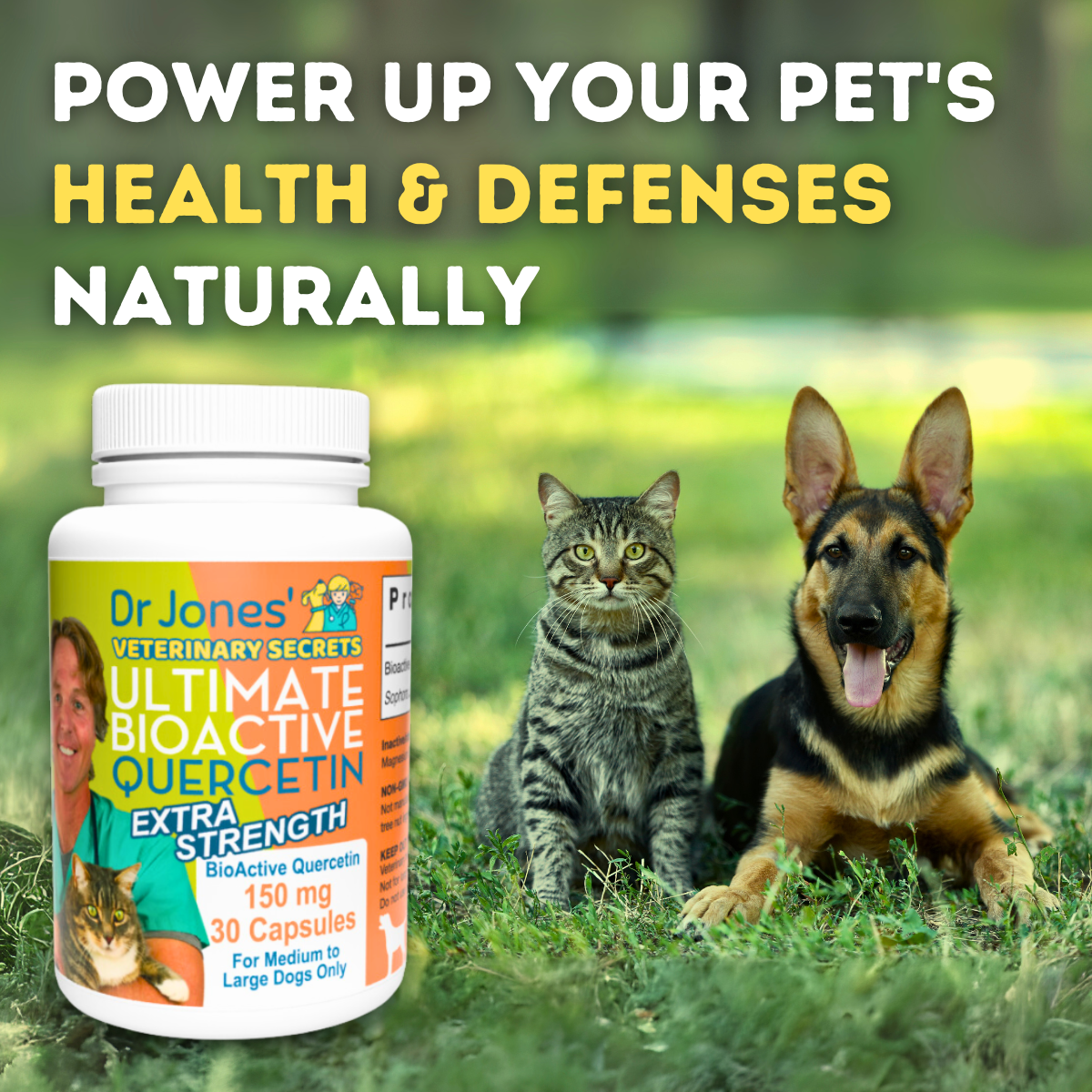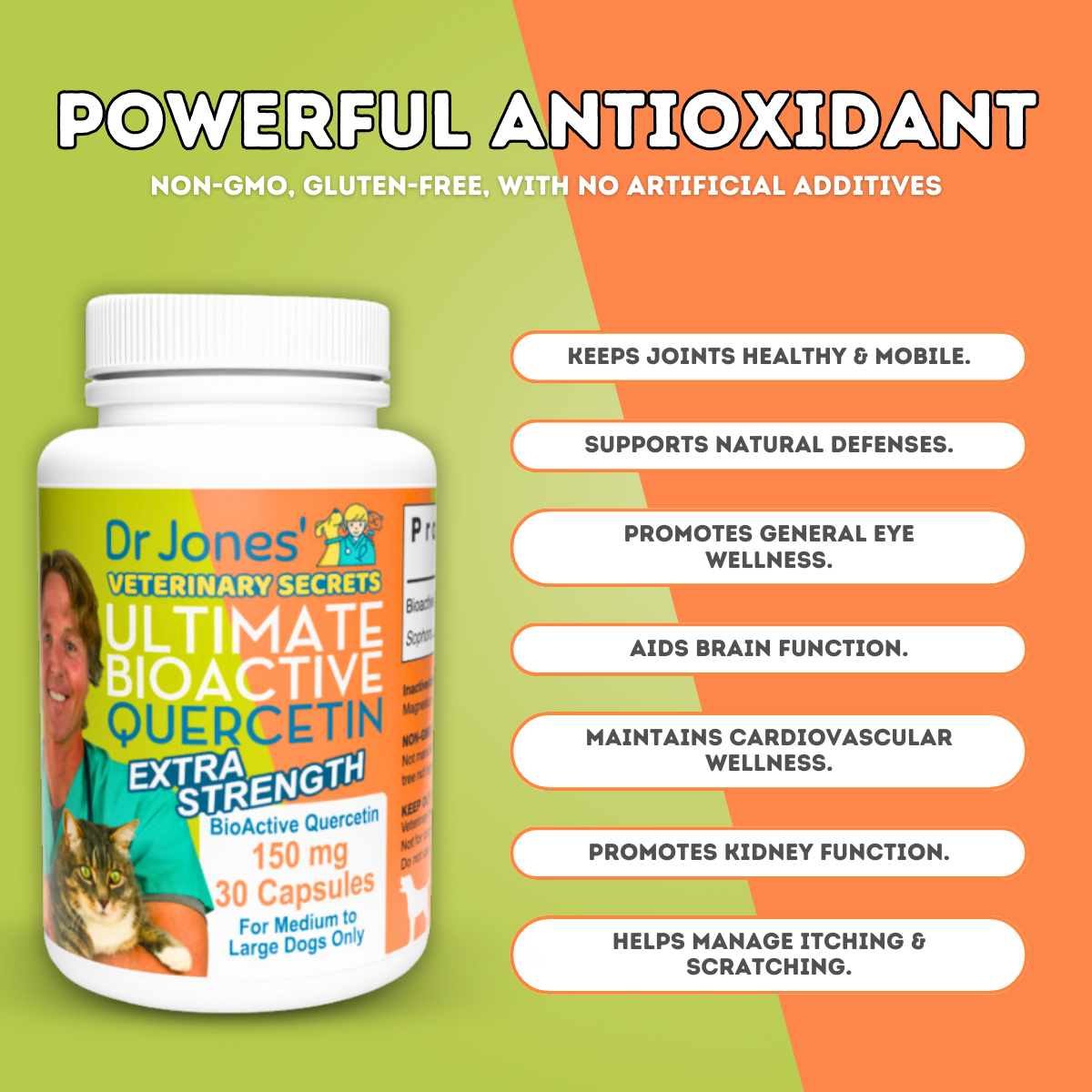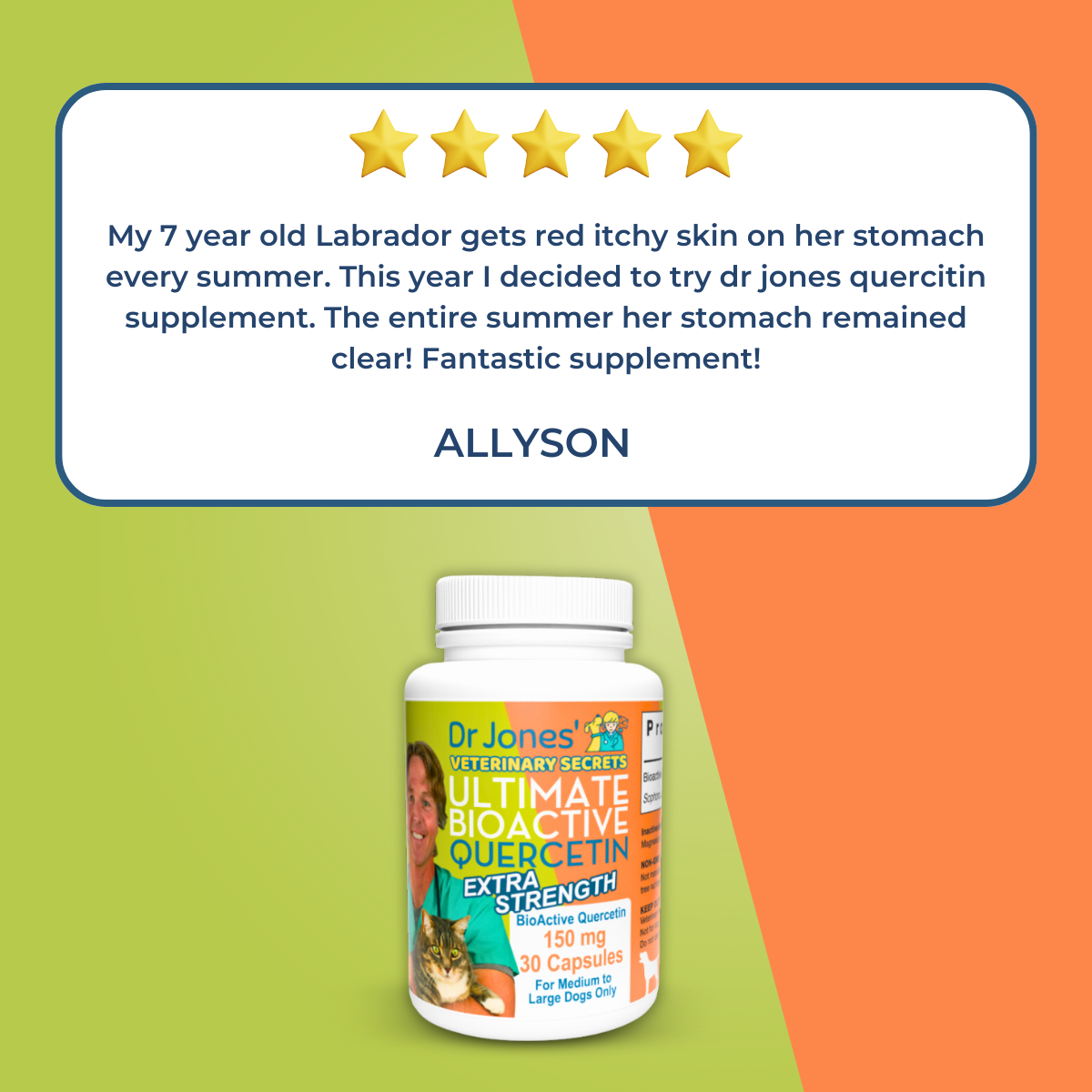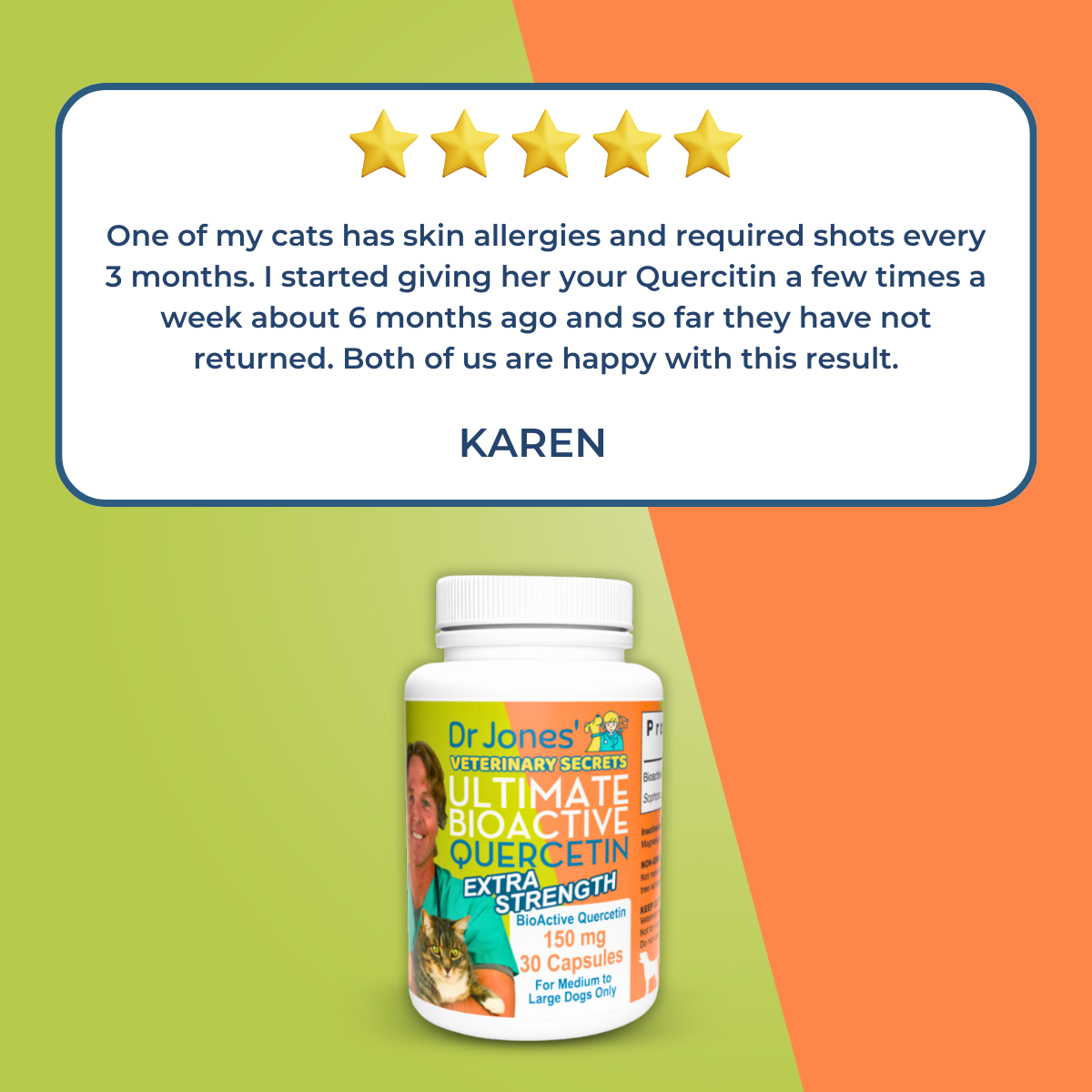How to Treat a Cat with a Swollen Chin: Common Causes and Solutions
![]()

Cat Scratching with Swollen Chin? Here’s What You Need to Know
If your cat is scratching and has a swollen chin, it might be dealing with one of the most serious allergies that can affect our feline friends. Unfortunately, the treatment we often rely on—like steroids and immunosuppressives such as ATOPICA—may not be the best option in the long run.
Why Traditional Treatments May Not Be Ideal
Steroids and medications like ATOPICA work by blocking the immune response, which can reduce symptoms like red skin lesions and a swollen lip. But, there are some serious side effects that can arise from these drugs. We’re talking about issues like diabetes, pancreatitis, and increased susceptibility to infections. Not exactly the kind of solution you want for your pet’s health.
The Holistic Alternative: Quercetin
The good news is that there are holistic alternatives out there that can work wonders without those harmful side effects. One of the most effective natural treatments is a flavonoid called Quercetin, which you can find in apple peels. This powerhouse ingredient has been showing incredible results for cats with allergies and itching.
Introducing Dr. Jones’ Ultimate Bioactive Quercetin for Cats
We’ve now made a whole plant-based Quercetin supplement that’s getting fantastic feedback from pet owners. If your cat is suffering from allergies or itching, this might be the natural solution you’ve been looking for.
Dr. Jones’ ULTIMATE BIOACTIVE Quercetin for Cats is all-natural, safe, and designed to support your cat’s health without the harsh side effects of traditional medications. Give it a try, and see the difference it can make for your feline companion!


Feline Eosinophilic Granuloma Complex: What Every Cat Parent Should Know
I recently encountered a case with my new cat, Cassian (who, unfortunately, isn’t pictured here), who had a swollen lower lip along with red lesions on his groin. He was licking his skin, scratching his face, and generally uncomfortable. This behavior often points to a more serious allergic response, caused by an increase in eosinophils, which we call Eosinophilic Granuloma Complex (EGC). Let me explain more about this condition and how we can help our furry friends.
What is Feline Eosinophilic Granuloma Complex?
Eosinophilic Granuloma Complex (EGC) is a term that describes a group of skin lesions in cats, which includes:
-
Eosinophilic plaque
-
Eosinophilic granuloma
-
Indolent ulcers
While the exact cause of EGC in cats isn’t fully understood, research suggests that it’s often an allergic response (hypersensitivity reaction), which tends to recur. There’s also evidence pointing to genetic factors playing a role in some cats.
Recognizing the Symptoms of Eosinophilic Granuloma Complex
The most common location for these lesions is on the lips—especially the upper lip—where they appear as ulcers. These lesions are sometimes called “rodent ulcers," but that’s technically a misnomer. The lesions can vary in size, from small and barely noticeable to large and disfiguring. Some of these lesions may even bleed.
EGC lesions can also develop in the mouth, along the gums and palate, or on other parts of the body. When they appear in other areas, like the hind legs or stomach, they often present as bald patches with raised, reddened skin, which are known as eosinophilic plaques. These can be itchy, and cats will often lick or bite at the affected areas.
Treatment Options for Eosinophilic Granuloma Complex
Conventional Treatments
The most common treatment for EGC is corticosteroids, which help control the symptoms. These can be given orally in tablet form or through long-lasting injections. The treatment usually lasts for weeks or months, as EGC lesions tend to recur. While side effects are generally minimal in cats, prolonged steroid use can lead to weight gain and other side effects.
Another option is cyclosporine (Atopica®), which acts as an immunosuppressant and is a good alternative for cats who can’t tolerate steroids.
Alternative Solutions
Flea and insect control is crucial when dealing with EGC, as insect bites can trigger an exaggerated immune response. I recommend using Diatomaceous Earth, Brewer’s yeast, or Coconut oil/Neem oil flea sprays as natural alternatives for flea control.
For some cats, elimination diet trials or hypoallergenic diets can be helpful, as food allergies may contribute to EGC. The trial typically involves feeding your cat a unique protein, like duck, that they’ve never eaten before, for 6-8 weeks.
Natural Remedies
-
Licorice Root is a potent natural steroid and may help reduce inflammation. I recommend giving 1/4ml per 10lbs twice daily for a maximum of 14 days. I carry a Licorice Root Extract at Dr. Jones’ ULTIMATE Licorice Root.
-
Topical Steroids like 1% cortisone cream can offer relief, but stronger veterinary creams are also available.
-
CBD (Cannabidiol) has immune-modulatory properties and may help with inflammation and immune responses. A dose of 3mg/10lbs twice daily can work wonders.
-
Quercetin, a flavonoid found in apple peel, has powerful anti-itch properties. Some cats respond very well to quercetin, and I’ve seen it work for my own cats. I recommend 50mg (1 capsule) per 15lbs daily. Try Dr. Jones’ BIOACTIVE Quercetin, which has been effective in many cases!
Healing Your Pet at Home
Feline eosinophilic granuloma complex is a tough condition to treat, and many cats require steroid treatment for long-term management. However, a proper food trial and ensuring that your cat is free of fleas can greatly improve the situation.
Natural Options
When it comes to natural treatments, Quercetin is at the top of my list. It’s helped many allergic cats—including my own—and could be a game-changer for your cat as well. If you’re interested, you can try Dr. Jones’ BIOAVAILABLE Quercetin for Cats to see if it can provide relief for your furry friend.

P.S. It’s essential to remember that food trials and flea control are critical steps in managing this condition.
P.P.S. For natural remedies, Quercetin has been a standout, and I truly believe it can make a difference for many cats dealing with allergies.
Introducing Dr. Jones’ Ultimate Bioactive Quercetin for Cats
We’ve now made a whole plant-based Quercetin supplement that’s getting fantastic feedback from pet owners. If your cat is suffering from allergies or itching, this might be the natural solution you’ve been looking for.
Dr. Jones’ ULTIMATE BIOACTIVE Quercetin for Cats is all-natural, safe, and designed to support your cat’s health without the harsh side effects of traditional medications. Give it a try, and see the difference it can make for your feline companion!









The recommended dosage of Dr. Jones’ Ultimate BioActive Quercetin for Dogs and Cats is 50mg (1 capsule) per 15lbs daily, but my cat only weighs 6lbs – how much should I give him?
Our minimum dosage is 1 capsule for 15lbs below but you can start with the halfdose and gradually increase it.